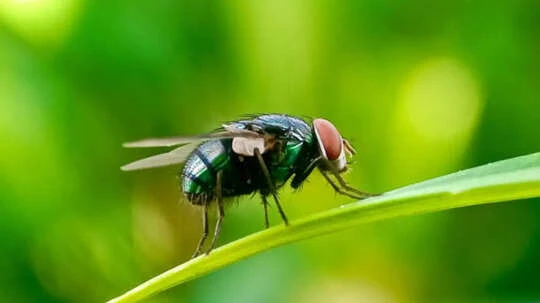The ever-present case of the flesh-eating screw-worm parasite has been detected in a person in the United States, health authorities have confirmed.
According to the government officials, the case was identified in a person from Maryland who had travelled from Guatemala.
Experts believe the parasitic flies eat cattle and other warm-blooded animals alive, with an outbreak beginning in Central America and southern Mexico late last year.
Also known as New World Screwworm, NWS, or Cochliomyia hominivorax, doctors believe its effects can be devastating to many species. Being endemic in Central and South America as well as the Caribbean, it can severely affect the health of cattle, as well as humans. The NWS flies into open wounds and lives off of live tissue, causing a lot of pain by screwing into the tissue.
What is a screwworm?
Doctors say New World screwworms are parasitic flies whose females lay eggs in wounds on any warm-blooded animal. Once the eggs hatch, screwworm larvae use their extremely sharp mouths to burrow through living flesh, eventually killing their host if left untreated.
The feeding of maggots is similar to a screw being driven into wood, giving the pests their name.
Infestations begin when a female fly lays eggs on open wounds or other parts of the body in live, warm-blooded animals. It primarily affects livestock but can also infest birds and people. The smell of a wound or an opening, such as the nose, mouth, or eyes, the umbilical cord of a newborn animal, or genitals, will attract the female flies. Wounds as small as a tick bite may attract a female fly to feed and lay her eggs. One female can lay 200 – 300 eggs at a time and may lay up to 3,000 eggs during her 10- to 30-day lifespan.
Experts say that in food production, animals experience this, which leads to a loss of appetite, infection, and severe weakness or death. The only treatment is the removal of the larvae. The only treatment for screwworms is removing the larvae and thoroughly disinfecting wounds. They are largely survivable if treated early enough.
Signs and symptoms of screwworm
According to the CDC, the NWS infestations are extremely painful. If you have an infestation, you may see maggots around or in an open wound. Doctors say they can also be found in your nose, eyes, or mouth. A few signs and symptoms of NWS include:
- Unexplained skin lesions (wounds or sores) that do not heal
- Skin wounds or sores that worsen over time
- Painful skin wounds or sores
- Bleeding from open sores
- Feeling larvae movement within a skin wound or sore, nose, mouth, or eyes
- Seeing maggots around or in open sores
- A foul-smelling odour from the site of the infestation
Secondary bacterial infections sometimes occur and may cause high fever or chills.
What are the risk factors for NWS?
Experts say you may be at a high risk for NWS if you travel to areas where the flies are present, or
- You have an open wound, from a scratch or cut, or from an insect bite
- Your immunity levels are down
- You have a medical condition that leads to bleeding or open sores
- You sleep outdoors
- You live or work at a place near livestock or other warm-blooded animals
